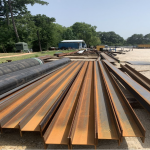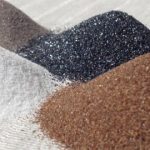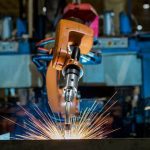Laser cleaning is a process that can effectively get rid of foreign matter from a metal surface. It has surged into the industry as a simple, time-saving, and cheap solution. It effectively and quickly removes rust and debris from surfaces. In this article, you will learn about the process of laser cleaning, laser cleaning machines, and alternatives to the process.
How Laser Cleaning Works
Laser Ablation
The process of laser cleaning relies on a process called laser ablation and a materials ablation threshold. The coating that’s being cleaned (usually rust or paint) generally has a smaller threshold than the material underneath. This causes the underlying metal to remain undamaged by the laser.
Laser Characteristics
The beam possesses a Gaussian profile that allows the laser to concentrate energy into a single spot. This ensures energy levels reach intensity levels high enough to actually remove these contaminants from the surface of the metal.
Part of how the process differentiates from standard laser milling is the focus of the laser. In traditional laser milling, the laser focuses directly on the surface of the material. However, laser cleaning focuses the beam above the material so that there is only enough energy to take off the layer of material that is being cleaned.
Laser cleaning also works well because of its speed. The laser provides high-quality cleaning in a fraction of the time of traditional cleaning methods. One of the main factors to the speed of this process is the use of a pulsating laser. Instead of one long laser blast, the beam pulsates. Thus, the same amount of energy does more work on the unwanted substance. This influences the speed of the process and protects the underneath material more.
Lastly, the intensity of the laser depends on the underlying material and what the contaminate. Then the beam is adjusted to fall into an intensity between the metal and the contaminate. Generally, there is a large difference between these needed intensities to vaporize the material.
Resources Required
A laser cleaning machine does not require any fuel or other material to run other than power. This is part of what makes it so effective, because of the efficiency, speed, and lack of resources it requires. Traditionally the process of removing rust requires some sort of chemical and soaking or a time-consuming blasting process. Comparatively this process only requires energy and is able to be completed in only a fraction of the time.
Laser Cleaning Machines

There are three classes of different types of laser cleaning machines, handheld, manual, and automated. Depending on what the task is different ones are better at certain things. Though all can do the same things different ones are more useful in different areas and industries
Handheld Laser Cleaning
The most simple and cheap form of laser cleaning is handheld laser cleaning. Though this type of machine does involve having a person control and know how to use the machine, it proves useful for small jobs. For infrequent use and small-scale jobs, the handheld provides the optimal solution. Despite these positives, it lacks the automation needed for any large projects.
Manual Laser Cleaning
Similar to handheld machines the manual machines still require some sort of frequent human interaction. However, these machines allow for the cleaning of the item to occur without constant human intervention. These machines tend to be more expensive, however, it reduces operator time. Manual laser cleaning provides a strong solution for small objects that require frequent cleaning.
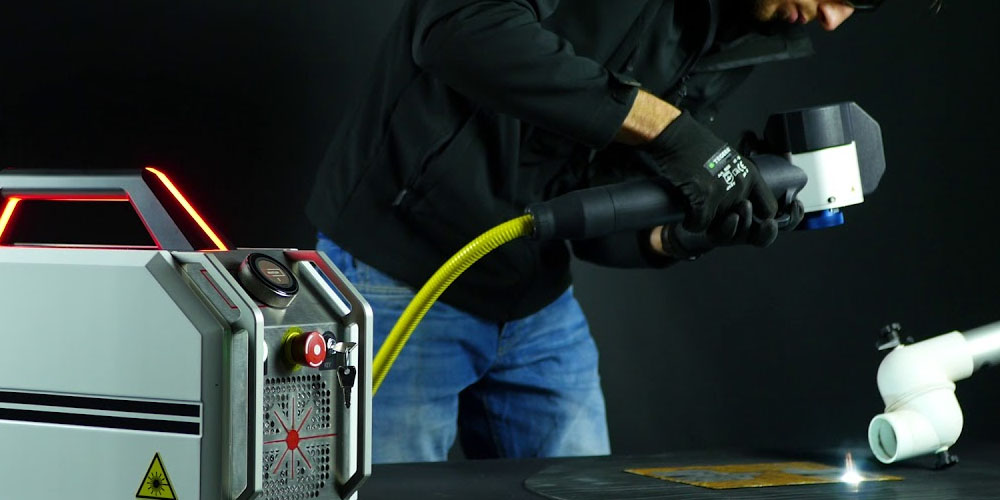
Automated Laser Cleaning
Lastly, there are the automated machines. These machines intake and output items from any sort of assembly line. Whether a conveyor belt-based system or robot-based, several options exist. While these kinds of machines are the most expensive, they are also the most versatile and productive. Outside of assembly line production, these machines lack practicality due to their fully automated capabilities.
Laser Cleaning Alternatives
General Alternatives
There are many different alternatives to this process, though each has its drawbacks depending on the specific use. These alternatives are able to do everything that laser cleaning is able to do with varying drawbacks.
Sandblasting provides a well-established alternative to laser cleaning. This method ejects pressurized media into the material that requires cleaning. Though this process has worked well for many years it has some drawbacks compared to laser cleaning. It’s difficult to automate and has high material costs when needing to use it consistently. However, it is a great alternative when required sparingly. Because of how simple and safe it is, it provides good results on a smaller scale.
Another alternative is dry ice blasting. Similar to sandblasting, dry ice blasted into the object via pressurized air. Dry ice best applies on a smaller scale because of the material costs and the lack of easy automation. However, with dry ice blasting the lack of chemicals and the lack of creating secondary waste is what makes it a good choice.
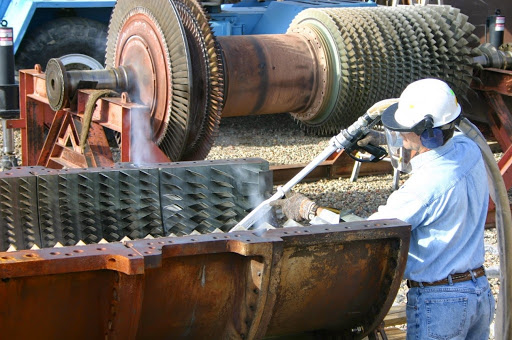
Additional Alternatives
These alternatives can not do everything that laser cleaning or its main alternatives. However, they still hold usefulness in certain situations.
Pickling uses chemicals to remove contaminants from metal surfaces. Though this process applies to larger-scale products than most forms of laser cleaning, there are still some drawbacks. Because of the use of chemicals, there is a larger inherent safety risk. Pickling also produces corrosive waste products leftover from the process. The most practical use of this process is in removing rust.
Another potential alternative is a process called smooth clean surface (SCS). This process eliminates contaminants and imperfections on the metal produced in the milling process by spinning brushes. Because there is no use of chemicals, the process produces little waste. The simplicity of the process allows for easy removal and generally for removing rust and manufacturing imperfections.

